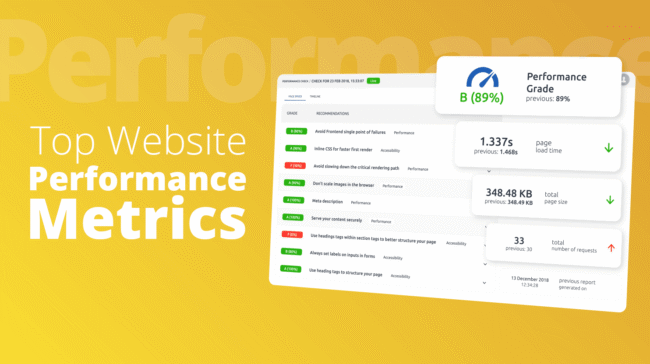Managing a website effectively requires more than just uploading content; it demands ongoing monitoring, optimization, and security vigilance. The WP
Managing a website effectively requires more than just uploading content; it demands ongoing monitoring, optimization, and security vigilance. The WPC15 Dashboard has emerged as a go-to platform for website owners, developers, and marketers who want a comprehensive yet easy-to-use interface to keep their sites running at peak performance. In this article, we will dive deep into what the WPC15 Dashboard offers, how it helps you streamline your site management, and answers to common questions to make your experience smooth and productive.
What is the WPC15 Dashboard?
The WPC15 Dashboard is a centralized management tool designed to give website owners full visibility and control over their site’s performance, security, and user experience. It acts as a single pane of glass where you can track real-time analytics, monitor uptime, manage SEO, and handle content — all from one place.
The dashboard integrates data from multiple sources and presents it in an easy-to-navigate format, helping you quickly spot issues, identify opportunities, and make data-driven decisions.
Key Features of the WPC15 Dashboard
The WPC15 Dashboard is packed with features that make it a powerful asset for website management:
1. Real-Time Website Performance Metrics
Monitor key indicators such as page load times, server response rates, bandwidth usage, and visitor counts to ensure your website performs optimally.
2. User Behavior Tracking
Understand how visitors interact with your site through heatmaps, click tracking, and session recordings. These insights help improve navigation and content placement.
3. SEO Audit and Recommendations
The dashboard offers SEO scoring and actionable recommendations, including keyword usage analysis, meta tag optimization, and backlink monitoring to boost search engine rankings.
4. Security and Uptime Monitoring
Keep your website safe with alerts for downtime, malware detection, unauthorized access attempts, and security patch reminders.
5. Content Management Integration
Manage your site’s content directly from the dashboard, including publishing, editing, and scheduling posts if your CMS is compatible.
6. Customizable Reports and Automated Alerts
Tailor reports to focus on the metrics you care about most and schedule them to be sent automatically. Set alerts for specific events like traffic surges or security threats.
7. Third-Party Tool Integrations
Easily connect your dashboard with tools like Google Analytics, email marketing platforms, and social media accounts for a comprehensive management experience.
Benefits of Using the WPC15 Dashboard
Adopting the WPC15 Dashboard brings several clear advantages:
Centralized Management
Having all essential website data and controls in one interface reduces complexity and saves time.
Faster Issue Detection and Resolution
Real-time monitoring and alerts help you quickly identify and fix problems before they affect visitors.
Improved User Experience
Behavioral data enables you to optimize navigation and content placement, resulting in happier visitors and lower bounce rates.
SEO Performance Boost
Regular SEO audits and suggestions help you climb search rankings and attract more organic traffic.
Enhanced Security
Continuous security monitoring protects your site from cyber threats and downtime.
Scalable for Multiple Sites
Manage numerous websites from a single account, ideal for agencies and freelancers.

How to Set Up and Use the WPC15 Dashboard
Step 1: Create Your Account and Connect Your Website
Start by signing up for the WPC15 Dashboard service. Then connect your site by installing the provided plugin or inserting a tracking snippet into your site’s code.
Step 2: Customize Your Dashboard Layout
Select which metrics and reports you want to prioritize. Organize your dashboard for easy access to the most important data.
Step 3: Configure Alerts and Notifications
Set up alerts for critical events such as site downtime, traffic anomalies, or security warnings so you can respond promptly.
Step 4: Integrate Additional Tools
Link your Google Analytics, marketing automation, and social media accounts to unify your data streams.
Step 5: Analyze Reports and Take Action
Regularly review your dashboard’s insights and SEO suggestions to make improvements that boost performance and engagement.
Best Practices for Getting the Most from WPC15 Dashboard
- Regularly Check Performance Metrics: Daily or weekly reviews help you spot trends and prevent issues.
- Use User Behavior Insights to Guide Design: Optimize your website’s layout and content based on actual visitor behavior.
- Prioritize SEO Recommendations: Implement SEO improvements consistently to maintain good search rankings.
- Respond Immediately to Security Alerts: Avoid prolonged exposure to risks by addressing alerts quickly.
- Automate Report Sharing: Keep your team informed with scheduled reports.
- Keep Your Dashboard and Integrations Updated: Ensure accuracy and security by using the latest versions.
Who Should Use the WPC15 Dashboard?
Small to Medium Business Owners
Gain insight and control without needing extensive technical skills.
Bloggers and Content Creators
Understand how your audience engages and optimize content for growth.
E-commerce Store Managers
Track sales performance, monitor user behavior, and keep your store secure.
Web Developers and Digital Agencies
Manage multiple client sites efficiently and provide proactive maintenance and reporting.
Frequently Asked Questions (FAQs)
1. Is the WPC15 Dashboard beginner-friendly?
Yes. It offers an intuitive interface, detailed tutorials, and responsive support for users at all skill levels.
2. Can I manage more than one website with one account?
Yes. The platform supports multiple website management from a single dashboard.
3. Does the dashboard work on mobile devices?
Yes, it’s designed to be responsive and accessible on smartphones and tablets.
4. How secure is the WPC15 Dashboard?
It uses encryption, secure authentication, and regular updates to protect your data and website.
5. Are there subscription plans?
Yes, with varying levels of features and usage limits to fit different needs and budgets.
6. Can I customize the data shown on my dashboard?
Absolutely. You can select and arrange the metrics and reports that matter most to you.
7. Does WPC15 Dashboard integrate with Google Analytics?
Yes, integration with Google Analytics and other tools is supported.
8. How often are the analytics data updated?
Most metrics update in real time or near real time depending on data source.
9. Can I get notified immediately if my website goes down?
Yes, the dashboard includes uptime monitoring and instant alerts.
10. Is customer support available?
Support options vary by plan but typically include email, live chat, and knowledge base resources.
Conclusion
The WPC15 Dashboard is a comprehensive tool that empowers website owners with the insights and controls necessary to run high-performing, secure, and user-friendly websites. By bringing all critical website data into one easy-to-use platform, it simplifies management and helps you make smarter decisions faster.
Whether you’re running a personal blog, a growing business site, or managing multiple client websites, the WPC15 Dashboard can be a valuable part of your digital toolkit.
For more info: infromednation




COMMENTS